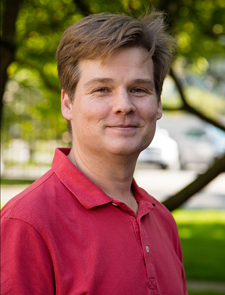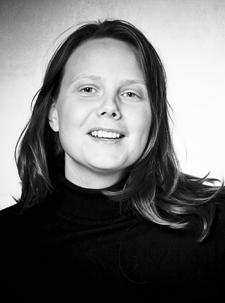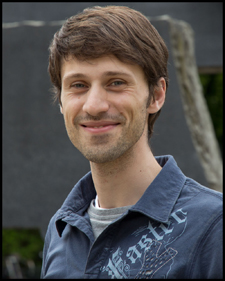Three researchers at NBI receive grants from the Villum Foundation
Three researchers from the Niels Bohr Institute, theoretical physicist Michael Trott, condensed matter physicist Jessica Bolinsson and astrophysicist Claudio Grillo have received grants totalling 13.4 million kroner from the Villum Foundation’s Young Investigator Programme.

Michael Trott, assistant professor in the research group Theoretical Particle Physics and Cosmology at NBI have been awarded 7 million kroner from the Villum Foundation’s Young Investigator Programme.
Michael Trott, assistant professor in the research group Theoretical Particle Physics and Cosmology at the Niels Bohr Institute, University of Copenhagen have been awarded 7 million kroner for the project: Systematic study of the Higgs boson and Effective Field Theory.
The aim of the project is a systematic study of the properties of the Higgs boson – the particle that was discovered at CERN’s Large Hadron Collider in 2012.
“It is essential to determine the exact nature and properties of the Higgs particle, as the Higgs is a unique fundamental particle. The particle is thought to play a key role in a complex mechanism based on the fundamental interactions in nature that create mass in other particles,” explains Michael Trott.
Michael Trott wants to build up a strong research group to attempt to analyse the advanced Higgs data as the precision increases. The theoretical descriptions used to study the Higgs must constantly evolve, so any deviation in properties of the particle can always be interpreted. The aim is to understand and characterise the Higgs particle in a general perspective of the so-called Effective Field Theory.
The grant will finance two postdocs, a PhD student and guest researchers.

Jessica Bolinsson, postdoc at the Center for Quantum Devices at the Niels Bohr Institute and the Nano-Science Center has been awarded 2.4 million kroner from the Villum Foundation’s Young Investigator Programme.
Jessica Bolinsson, postdoc at the Center for Quantum Devices at the Niels Bohr Institute and Nano-Science Center at the University of Copenhagen has been awarded 2.4 million kroner for the project: Alternatives for gold particles in the fabrication of semiconducting nanostructures.
Nanostructures are being investigated in various engineering and scientific areas, for example, as components for electronics of the future. Electronic elements on the nanoscale are extremely small – a nanometer is a thousandth of a micrometer, which is a millionth of a meter.
A group of nanostructures that have been studied intensely in recent years are semiconducting nanowires. Semiconducting nanowires have shown promising potential as a material for many different applications.
“In this project we will study the crystal growth of semiconducting nanowires. Up until now, gold nanoparticles have been used for this purpose. We want to investigate what happens when you use other metals. There are a number of potential applications for semiconducting nanostructures including new types of transistors and for experiments in topological quantum computers,” explains Jessica Bolinsson.
In the project, Jessica Bolinsson will carry out basic scientific research using advanced methods and techniques for the production of crystalline materials in order to understand the formation all the way down to the composition at the atomic level.
The grant will cover the salaries of the applicant as well as the costs of the experimental part of the project.

Claudio Grillo, postdoc at the Dark Cosmology Centre at the Niels Bohr Institute has received a grant of 4 million kroner from the Villum Foundation’s Young Investigator Programme.
Claudio Grillo, postdoc at the Dark Cosmology Centre at the Niels Bohr Institute at the University of Copenhagen has received a grant of 4 million kroner for the project: Light on dark matter in galaxy clusters.
In 1933, using observations of the Coma galaxy cluster, a new form of matter was discovered that does not emit any radiation – thus it cannot be seen and was therefore called dark matter. They had no idea what it was and even now – almost 100 years later, we are still discussing what this dark matter might be.
“You cannot see the dark matter, as it neither emits nor reflects light, but it has a weight and in this project we will measure the spatial distribution of dark matter in galaxy clusters using data from the Hubble Space Telescope and the Very Large Telescope in Chile,” explains Claudio Grillo.
He explains that they will observe as many as 25 galaxy clusters. A galaxy cluster is a collection of up to several thousand galaxies. The idea is that you will observe the light coming from a galaxy that lies behind the galaxy cluster. When the light from the background galaxy spreads out into space, some of its light will be refracted by the gravity of the galaxy cluster and thus the light from the distant galaxy is intensified. The phenomenon is called the gravitational lensing. The greater the mass of a galaxy cluster, the more the light from the background galaxy will be refracted.
“Only about 15-20 percent of the mass in a galaxy cluster is visible matter in the form of stars, planets and gas clouds – the rest is dark matter, which we do not know. But by measuring how much light from a background galaxy is being refracted by the gravity of the galaxy cluster, we can calculate how much dark matter there is,” explains Claudio Grillo.
The project aims not only to calculate how much dark matter there is in the galaxy clusters, but also how it is distributed in spherical halos. By looking at the distribution of the dark matter, we can calculate some of its physical properties and thus gain new insight for the theories about which particles the dark matter might consist of.
The grant is will finance the salaries of Claudio Grillo and a postdoc for three years.

Michael Trott, Assistant Professor, Theoretical Particle Physics and Cosmology, Niels Bohr Institute, University of Copenhagen, mrtrott@nbi.ku.dk
Jessica Bolinsson, PostDoc at the Center for Quantum Devices at the Niels Bohr Institute and Nano-Science Center at the University of Copenhagen jessica.bolinsson@nbi.ku.dk
Claudio Grillo, PostDoc, Dark Cosmology Centre, Niels Bohr Institute, University of Copenhagen, 3532-2592, grillo@dark-cosmology.dk

